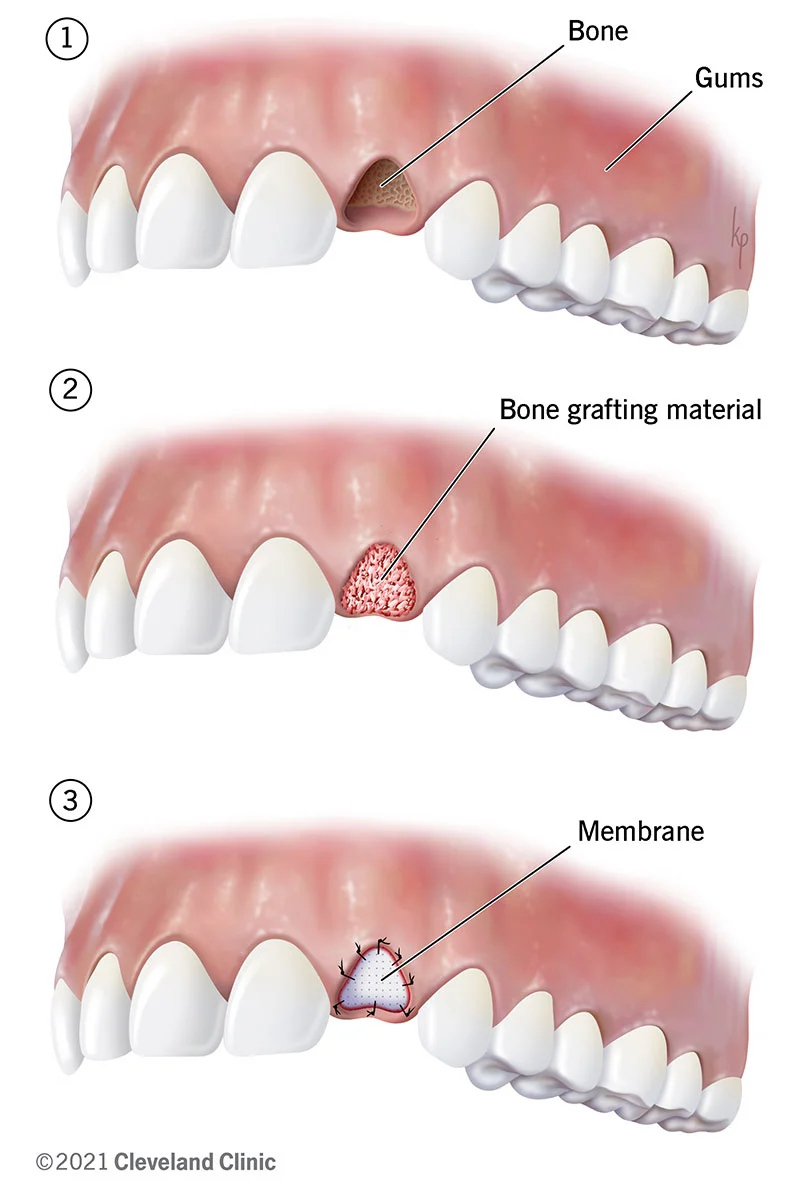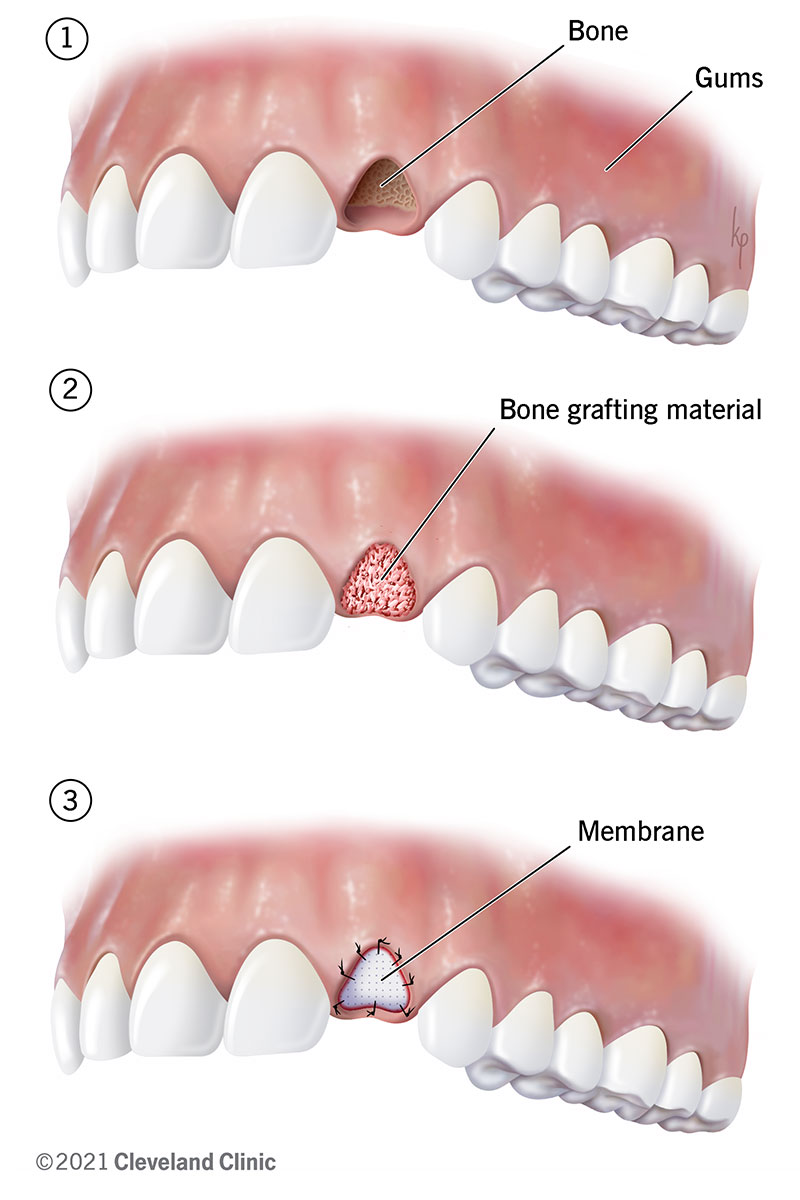
- Start by administering local anesthesia to numb the area.
- Make an incision in the gum tissue to expose the underlying bone.
- Prepare the graft material, which can be taken from another part of the patient’s body or obtained from a donor.
- Place the graft material onto the prepared site and secure it in place.
- Cover the graft with a protective membrane and suture the gum tissue back together.
- Allow several months for the graft to integrate with the surrounding bone.
- Once the graft has healed, the dental implant can be placed.
Remember to consult with a qualified dental professional for personalized advice.
How to Bone Graft Dental Implants?
Bone grafting is a crucial procedure in dental implant surgery. It involves the transplantation or augmentation of bone tissue to create a stable foundation for dental implants. This article will guide you through the process of bone grafting for dental implants, covering everything from the reasons why it is necessary to the different techniques used.
Why is Bone Grafting Necessary for Dental Implants?
Bone Loss: When a tooth is lost or extracted, the jawbone in that area begins to deteriorate because it is no longer stimulated by the tooth root. Without a strong and healthy jawbone, dental implants cannot be securely placed.
Insufficient Bone Volume: Some individuals naturally have a thin or inadequate jawbone, making it impossible to place dental implants without additional bone support.
Periodontal Disease: Severe gum disease can cause bone loss, compromising the stability of dental implants.
To overcome these challenges and ensure the success of dental implants, bone grafting is often necessary. By adding bone tissue to the affected area, the jawbone can be strengthened and augmented, providing a solid foundation for the implants.
The Bone Grafting Process
The bone grafting process typically involves the following steps:
Evaluation: Before proceeding with bone grafting, your dentist will evaluate the condition of your jawbone through dental imaging techniques such as X-rays or CT scans. This will help determine the extent of bone loss and the appropriate treatment plan.
Bone Graft Material: There are several types of bone graft materials used in dental implant procedures. Autografts involve taking bone from another part of your body, such as the chin or hip, and transplanting it to the jawbone. Allografts use donor bone, usually from a cadaver. Synthetic bone grafts, made from biocompatible materials, are also commonly used.
Grafting Procedure: During the bone grafting procedure, your dentist will make an incision in the gum tissue to access the jawbone. The graft material will be placed in the desired area and secured with sutures. Over time, the graft will integrate with the existing bone and promote new bone growth.
Types of Bone Grafting Techniques
There are several bone grafting techniques used in dental implant surgery. These include:
Socket Preservation: This technique is used immediately after a tooth extraction to preserve the socket and prevent bone loss. The empty socket is filled with bone graft material, encouraging new bone growth.
Sinus Lift: A sinus lift, also known as a sinus augmentation, is performed when the upper jaw lacks sufficient bone to support dental implants. The sinus membrane is lifted, and bone graft material is added to the sinus floor, creating a stable foundation for implants.
Block Bone Graft: In cases where there is significant bone loss, a block bone graft may be necessary. A block of bone is harvested from another part of the body and secured to the jawbone with screws or plates.
Recovery and Success Rates
After bone grafting for dental implants, it is crucial to allow sufficient time for healing and bone integration. The recovery period can vary depending on the individual and the extent of the grafting procedure. Your dentist will provide specific instructions for post-operative care, including pain management and oral hygiene practices.
The success rate of bone grafting for dental implants is generally high. With proper care and maintenance, the newly grafted bone will fuse with the existing bone, creating a strong and stable foundation for the implants. Regular check-ups with your dentist and good oral hygiene habits are essential for long-term success.
In conclusion, bone grafting is a vital step in the dental implant process, addressing bone loss and creating a solid foundation for implants. By undergoing bone grafting, individuals with inadequate bone volume or bone loss can achieve successful and long-lasting dental implant outcomes.
Key Takeaways: How to Bone Graft Dental Implants?
- Bone grafting is a procedure used to strengthen the jawbone before dental implant placement.
- It involves taking bone material from another part of the body or using synthetic materials.
- The graft is placed into the jawbone to promote new bone growth.
- Proper healing and integration of the graft are crucial for successful dental implant results.
- Regular follow-up visits with your dentist are important to monitor the progress of the bone graft and dental implant.
Frequently Asked Questions
What is a bone graft for dental implants?
A bone graft for dental implants is a procedure where additional bone material is added to the jawbone to create a solid foundation for dental implants. This is necessary when the jawbone is not strong enough or lacks sufficient volume to support the implants. The graft material can be taken from the patient’s own body, such as the chin or hip, or it can be sourced from a donor or synthetic material.
The bone graft promotes new bone growth and integration with the existing jawbone, allowing for successful implant placement. It helps ensure the stability and longevity of the dental implants.
How is a bone graft procedure performed?
The bone graft procedure for dental implants typically involves several steps. First, the patient is given a local anesthesia to numb the area and ensure a comfortable experience. Then, the surgeon makes a small incision in the gums to access the jawbone. The graft material is carefully placed into the area where the implant will be inserted.
Once the graft material is in place, the surgeon will close the incision with stitches and may cover it with a protective membrane. Over time, the graft material will fuse with the natural bone, creating a strong foundation for the dental implant. The healing process can take several months before the implant can be placed.
Are there any risks or complications associated with bone grafting for dental implants?
As with any surgical procedure, there are potential risks and complications associated with bone grafting for dental implants. These can include infection, bleeding, nerve damage, or allergic reactions to the graft material. However, these risks are relatively rare and can be minimized with proper pre-operative evaluation and post-operative care.
It is important to consult with an experienced and qualified oral surgeon who can assess your specific situation and discuss any potential risks or complications before proceeding with the bone graft procedure.
What is the recovery process like after a bone graft for dental implants?
The recovery process after a bone graft for dental implants can vary depending on the individual and the extent of the procedure. In general, it is normal to experience some swelling, discomfort, and minor bleeding in the first few days after the surgery. Pain medication and antibiotics may be prescribed to manage pain and prevent infection.
It is crucial to follow the post-operative instructions provided by your oral surgeon, which may include avoiding certain foods, practicing good oral hygiene, and attending follow-up appointments. The healing and integration of the graft material with the jawbone can take several months before the dental implant can be placed.
What are the benefits of bone grafting for dental implants?
Bone grafting for dental implants offers numerous benefits. Firstly, it allows patients with insufficient bone volume or density to receive dental implants and restore their missing teeth. The procedure helps create a strong and stable foundation for the implants, ensuring long-term success.
Bone grafting also preserves the natural contours of the jawbone and prevents further bone loss, which can occur when teeth are missing. It improves the aesthetic appearance of the face and supports overall oral health. Additionally, by providing a solid base for dental implants, bone grafting allows for better chewing and speaking abilities, enhancing the patient’s quality of life.
Dental Implants 101: What You NEED to Know! Part 3 (Everything Bone Grafting)
Conclusion: A Strong Foundation for Dental Implants
Bone grafting is integral for successful dental implant procedures, offering a robust foundation for secure implant placement and long-term stability. It addresses bone loss or insufficient density, employing advanced techniques like autografts or allografts to regenerate bone tissue. This enhances aesthetics, functionality, and overall oral health. If considering implants and concerned about bone loss, rest assured—bone grafting ensures a solid foundation for a beautiful and functional smile. Choosing a skilled dentist familiar with the procedure is key for successful, long-lasting results in dental implant journeys.
Call or Book appointment online
:Ace Dental Care Alpharetta office: 678-562-1555 - Book Now
Ace Dental Care Norcross office: 770-806-1255 - Book Now
Disclaimer
This blog post was generated by artificial intelligence. The content of this post may not be accurate or complete, and should not be relied upon as a substitute for professional advice. If you have any questions about the content of this post, please contact us.
We are constantly working to improve the accuracy and quality of our AI-generated content. However, there may still be errors or inaccuracies. We apologize for any inconvenience this may cause.






